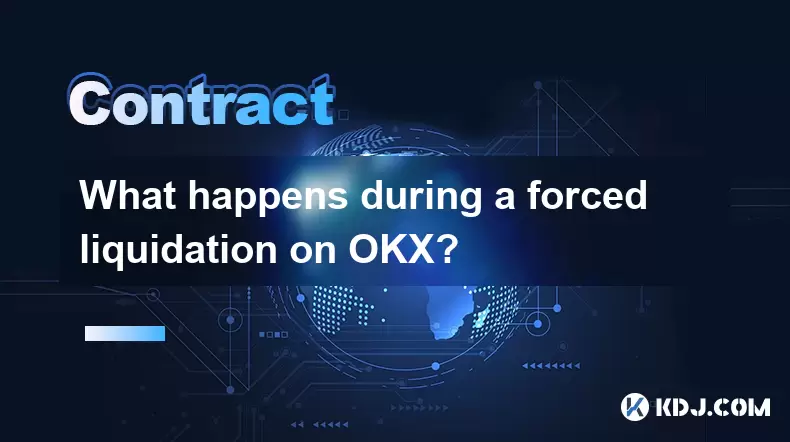-
 Bitcoin
Bitcoin $118200
-2.76% -
 Ethereum
Ethereum $4549
-3.53% -
 XRP
XRP $3.082
-5.55% -
 Tether USDt
Tether USDt $1.000
0.04% -
 BNB
BNB $840.1
0.07% -
 Solana
Solana $194.3
-2.22% -
 USDC
USDC $0.9998
0.00% -
 TRON
TRON $0.3591
-0.42% -
 Dogecoin
Dogecoin $0.2244
-7.13% -
 Cardano
Cardano $0.9017
3.20% -
 Hyperliquid
Hyperliquid $45.67
-2.41% -
 Chainlink
Chainlink $22.42
-5.44% -
 Stellar
Stellar $0.4253
-5.34% -
 Sui
Sui $3.756
-5.44% -
 Bitcoin Cash
Bitcoin Cash $590.7
-3.14% -
 Ethena USDe
Ethena USDe $1.001
0.00% -
 Hedera
Hedera $0.2493
-5.03% -
 Avalanche
Avalanche $23.66
-5.49% -
 Litecoin
Litecoin $121.5
-5.92% -
 Toncoin
Toncoin $3.421
-2.13% -
 UNUS SED LEO
UNUS SED LEO $9.276
0.30% -
 Shiba Inu
Shiba Inu $0.00001288
-6.44% -
 Uniswap
Uniswap $10.91
-8.59% -
 Polkadot
Polkadot $4.001
-4.71% -
 OKB
OKB $94.33
-9.04% -
 Dai
Dai $0.9998
-0.01% -
 Bitget Token
Bitget Token $4.549
-4.76% -
 Cronos
Cronos $0.1521
-7.71% -
 Ethena
Ethena $0.7361
-4.28% -
 Aave
Aave $312.0
-3.90%
What happens during a forced liquidation on OKX?
OKX triggers forced liquidation when your margin balance falls below maintenance levels, closing positions automatically to prevent further losses.
Aug 13, 2025 at 11:36 am

Understanding Forced Liquidation on OKX
Forced liquidation on OKX occurs when a trader’s margin balance falls below the required maintenance margin level, triggering an automatic closure of their position by the exchange. This mechanism protects both the trader and the platform from incurring further losses that could exceed deposited collateral. When trading with leverage, especially in perpetual futures or margin trading, the risk of liquidation increases as price movements against the position reduce equity. The system continuously monitors the mark price of the asset to determine whether a position remains solvent.
- The liquidation price is the price level at which the position will be forcibly closed.
- This price is calculated based on the entry price, leverage used, fees, and funding rates.
- Once the mark price reaches the liquidation price, the forced liquidation process begins.
How OKX Determines the Liquidation Trigger
OKX uses the mark price, not the last traded price, to determine liquidation. The mark price is designed to prevent manipulation and reflects the fair market value of the contract, often derived from the spot price of the underlying asset plus a funding basis. This distinction is crucial because sudden spikes or drops in the order book do not immediately trigger liquidations.
- If the position margin drops to or below the maintenance margin requirement, liquidation is initiated.
- The maintenance margin is a small percentage of the position’s notional value, varying by asset and leverage.
- For example, a BTC/USDT perpetual contract might require a 0.5% maintenance margin at 10x leverage.
When the margin ratio (calculated as equity / required margin) reaches 100%, the system flags the position. As the ratio falls below 100%, the position enters the liquidation zone.
The Liquidation Process: Step-by-Step
Once a position is flagged for liquidation, OKX activates a structured process to close it in a controlled manner.
- The exchange first attempts to notify the user via push alerts or email, if enabled.
- A liquidation engine takes over, seeking to close the position at the best available market price.
- OKX may use a partial liquidation mechanism for large positions, closing portions incrementally to minimize market impact.
- If partial liquidation fails to stabilize the margin, the entire position is closed.
During this process, the trader loses access to manually close or adjust the position. The system prioritizes risk containment over user control at this stage.
Fees and Penalties After Liquidation
After a forced liquidation, users face financial consequences beyond the loss of their margin.
A liquidation fee is charged, typically equivalent to the notional value of the position multiplied by a predefined fee rate (e.g., 0.1%).
This fee compensates the insurance fund or auto-deleveraging (ADL) system.
In extreme cases where the insurance fund is insufficient, OKX may activate ADL, where profitable counterparties are automatically reduced to cover losses.
The insurance fund absorbs most liquidation losses, protecting the system from insolvency.
ADL events are rare and occur only during high volatility when liquidations happen at unfavorable prices.
Users should note that losses can exceed initial margin in extreme scenarios, although OKX aims to prevent this through robust risk controls.
How to Monitor and Avoid Forced Liquidation
Traders can take proactive steps to avoid forced liquidation by monitoring key metrics and adjusting their strategy.
- Use the liquidation price indicator visible in the OKX trading interface.
- Enable price alerts for both entry and liquidation levels.
- Adjust leverage to lower levels to increase the buffer against price swings.
Risk management tools available on OKX include:
- Stop-loss orders to limit downside exposure.
- Take-profit orders to secure gains before volatility spikes.
- Position size calculators to estimate margin requirements and liquidation thresholds.
Regularly checking the account health section ensures awareness of current margin levels and potential risks.
Real-Time Example: BTC/USDT Perpetual Contract
Consider a trader opening a long position on BTC/USDT with 5 BTC at $60,000, using 20x leverage.
- The notional value is $300,000.
- The initial margin is $15,000 (5% of notional).
- The maintenance margin is 0.5%, or $1,500.
- The liquidation price is calculated at approximately $58,500, depending on fees and funding.
If the BTC mark price drops to $58,500, the system triggers liquidation. The position is closed at market, potentially incurring slippage. The user loses most, if not all, of the $15,000 margin and pays a liquidation fee.
Frequently Asked Questions
What is the difference between mark price and last traded price in liquidation?
The mark price is used to prevent unfair liquidations due to market manipulation or flash crashes. It is derived from external indices and funding rates, while the last traded price reflects actual trades on the order book. OKX uses the mark price to determine liquidation to ensure fairness.
Can I recover funds after a forced liquidation?
No, once a position is liquidated, the margin is lost. Any remaining balance after fees is returned to the wallet. There is no recovery process for liquidated positions, as the closure is final and irreversible.
Does OKX notify me before liquidation?
Yes, OKX provides real-time alerts via the app and email if notifications are enabled. However, during rapid market movements, the time between warning and execution may be extremely short, sometimes just seconds.
What happens to my position during ADL?
If auto-deleveraging is triggered, profitable counterparties with high leverage and low equity are selected to reduce their positions. This only affects traders on the opposite side of the market and is based on a ranking system involving leverage and profitability.
Disclaimer:info@kdj.com
The information provided is not trading advice. kdj.com does not assume any responsibility for any investments made based on the information provided in this article. Cryptocurrencies are highly volatile and it is highly recommended that you invest with caution after thorough research!
If you believe that the content used on this website infringes your copyright, please contact us immediately (info@kdj.com) and we will delete it promptly.
- Kazakhstan's Crypto Leap: Bitcoin ETF and Central Asia's Digital Finance Future
- 2025-08-13 12:45:19
- BlockDAG Presale Blazes Past $371M: Fundraising Frenzy Fuels Crypto Sensation
- 2025-08-13 13:05:21
- Meme Coins: Chasing the 2025 Surge – Which Will Moonshot?
- 2025-08-13 10:25:23
- Bitcoin's Wild Ride: Rally, Pullback, and What's Next
- 2025-08-13 10:25:23
- Bitcoin, Bitmax, and Institutional Demand: A New Era of Crypto Investment
- 2025-08-13 10:45:12
- Solana, ROAM, and Airdrops: What's the Buzz in 2025?
- 2025-08-13 11:35:13
Related knowledge

Is it possible to adjust the leverage on an open position on KuCoin?
Aug 09,2025 at 08:21pm
Understanding Leverage in KuCoin Futures TradingLeverage in KuCoin Futures allows traders to amplify their exposure to price movements by borrowing fu...

What cryptocurrencies are supported as collateral on KuCoin Futures?
Aug 11,2025 at 04:21am
Overview of KuCoin Futures and Collateral MechanismKuCoin Futures is a derivatives trading platform that allows users to trade perpetual and delivery ...

What is the difference between realized and unrealized PNL on KuCoin?
Aug 09,2025 at 01:49am
Understanding Realized and Unrealized PNL on KuCoinWhen trading on KuCoin, especially in futures and perpetual contracts, understanding the distinctio...

What different order types are available to use on KuCoin Futures?
Aug 13,2025 at 11:35am
Understanding Order Types on KuCoin FuturesKuCoin Futures offers a comprehensive range of order types to accommodate different trading strategies and ...

How does KuCoin Futures compare against Binance Futures in terms of features?
Aug 09,2025 at 03:22am
Trading Interface and User ExperienceThe trading interface is a critical component when comparing KuCoin Futures and Binance Futures, as it directly i...

How can I manage risk when applying high leverage on KuCoin?
Aug 13,2025 at 11:35am
Understanding High Leverage and Its Implications on KuCoinHigh leverage in cryptocurrency trading allows users to control larger positions with a rela...

Is it possible to adjust the leverage on an open position on KuCoin?
Aug 09,2025 at 08:21pm
Understanding Leverage in KuCoin Futures TradingLeverage in KuCoin Futures allows traders to amplify their exposure to price movements by borrowing fu...

What cryptocurrencies are supported as collateral on KuCoin Futures?
Aug 11,2025 at 04:21am
Overview of KuCoin Futures and Collateral MechanismKuCoin Futures is a derivatives trading platform that allows users to trade perpetual and delivery ...

What is the difference between realized and unrealized PNL on KuCoin?
Aug 09,2025 at 01:49am
Understanding Realized and Unrealized PNL on KuCoinWhen trading on KuCoin, especially in futures and perpetual contracts, understanding the distinctio...

What different order types are available to use on KuCoin Futures?
Aug 13,2025 at 11:35am
Understanding Order Types on KuCoin FuturesKuCoin Futures offers a comprehensive range of order types to accommodate different trading strategies and ...

How does KuCoin Futures compare against Binance Futures in terms of features?
Aug 09,2025 at 03:22am
Trading Interface and User ExperienceThe trading interface is a critical component when comparing KuCoin Futures and Binance Futures, as it directly i...

How can I manage risk when applying high leverage on KuCoin?
Aug 13,2025 at 11:35am
Understanding High Leverage and Its Implications on KuCoinHigh leverage in cryptocurrency trading allows users to control larger positions with a rela...
See all articles

























































































